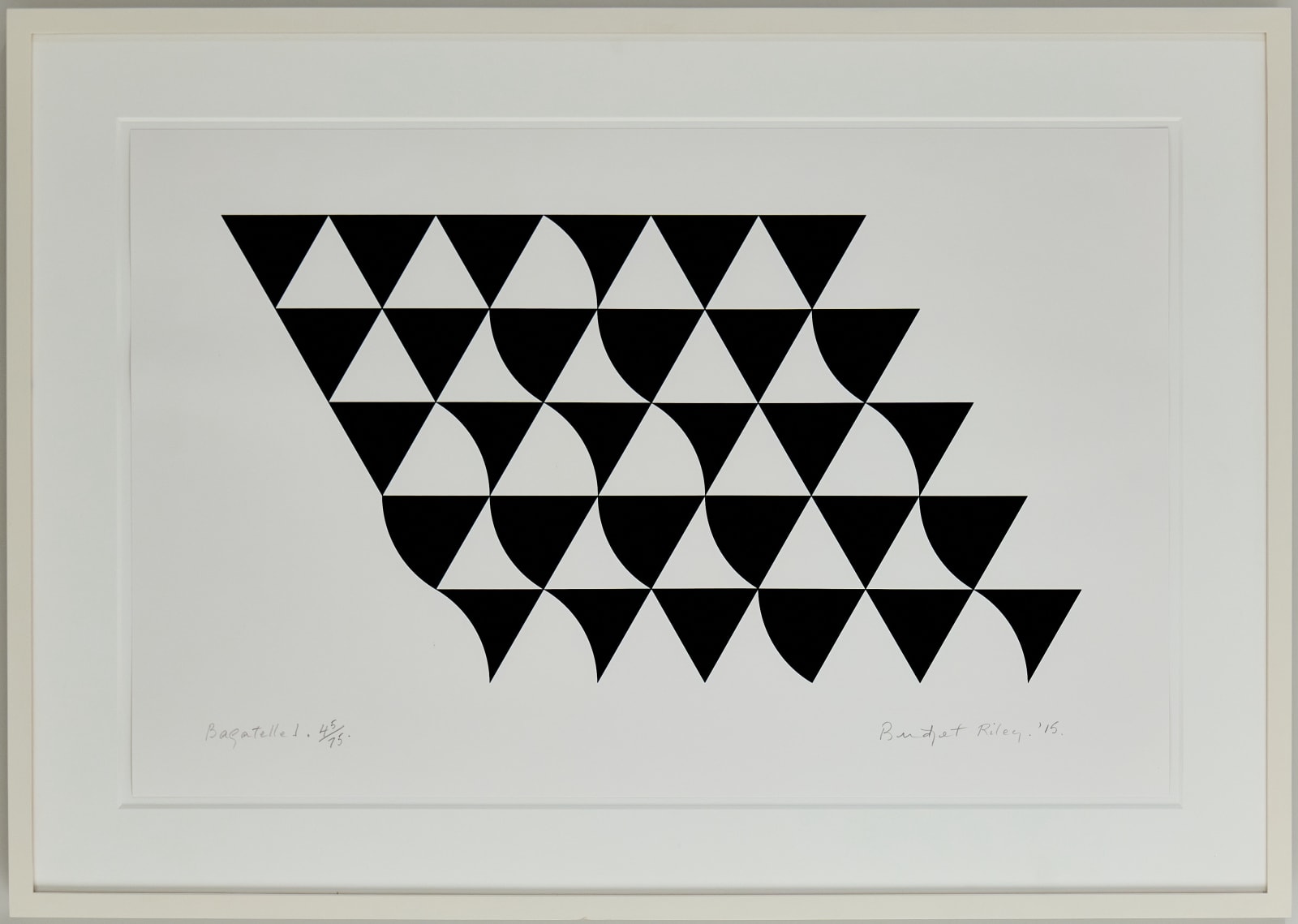Bridget Riley U. K., 1931
Bagatelle 1, 2015
Screenprint on wove paper, framed
Signed by the artist in pencil, lower right on recto
Signed by the artist in pencil, lower right on recto
Sheet: 52.8 × 82 cm
© Bridget Riley
Further images
The Bagatelle series features monochromatic screen prints depicting hard-edged forms in Riley's distinctive style. Here, Riley arranges triangular shapes, some with straight edges and others with curved sides, in a...
The Bagatelle series features monochromatic screen prints depicting hard-edged forms in Riley's distinctive style. Here, Riley arranges triangular shapes, some with straight edges and others with curved sides, in a pattern that creates a sense of movement and visual stimulation.
The title "Bagatelle" references a French billiards game, alluding to the erratic, user-generated motions that the artwork's visual effects evoke.These pieces epitomise Riley's non-representational approach, influenced by Italian Futurists and her own experiences. The subtle shifts and movements the viewer perceives as they scan the artwork challenge the stability of vision and create a dynamic visual experience. This effect relates to Riley's broader artistic concerns, including the exploration of perception, the nature of seeing, and the relationship between the viewer and the artwork.
The Bagatelle series holds significance within Riley's oeuvre as it demonstrates her continued commitment to abstraction and optical effects well into the 21st century. The series reflects Riley's enduring interest in the interplay of shape, line, and light, which she has explored throughout her career. As with much of her work, Riley's approach in the Bagatelle series is not merely about creating visually striking images. Instead, these artworks serve as a medium through which viewers can have a subjective experience influenced by their perceptions and understandings. This aspect of Riley's work aligns with the broader artistic concerns, including audience participation and the exploration of individual experience in an increasingly complex world.
The title "Bagatelle" references a French billiards game, alluding to the erratic, user-generated motions that the artwork's visual effects evoke.These pieces epitomise Riley's non-representational approach, influenced by Italian Futurists and her own experiences. The subtle shifts and movements the viewer perceives as they scan the artwork challenge the stability of vision and create a dynamic visual experience. This effect relates to Riley's broader artistic concerns, including the exploration of perception, the nature of seeing, and the relationship between the viewer and the artwork.
The Bagatelle series holds significance within Riley's oeuvre as it demonstrates her continued commitment to abstraction and optical effects well into the 21st century. The series reflects Riley's enduring interest in the interplay of shape, line, and light, which she has explored throughout her career. As with much of her work, Riley's approach in the Bagatelle series is not merely about creating visually striking images. Instead, these artworks serve as a medium through which viewers can have a subjective experience influenced by their perceptions and understandings. This aspect of Riley's work aligns with the broader artistic concerns, including audience participation and the exploration of individual experience in an increasingly complex world.







